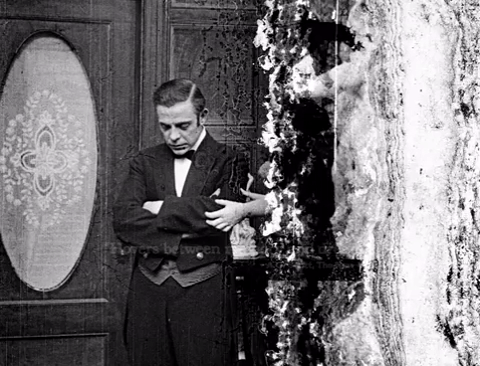
‘The images can be thought of as desires or memories: actions that take place in the mind. The filmstock can be thought of as their body, that which enables these events to be seen. Like our own bodies, this celluloid is a fragile and ephemeral medium that can deteriorate in countless ways. The nitro-cellulose base gradually returns to the elements that comprise it: cotton, nitric acid, and camphor. The images deform and coalesce throughout the length of the film, appearing to melt, burn, drip or tear away from the base. This is a natural phenomenon. I chose only those images where this deterioration has happened over time, while stored in archives. Like the film, our bodies will eventually be reduced to what essentially forms us. What they contain is who we are: our thoughts, dreams, and memories. These will be reprised as something new, and hopefully, more lasting.
‘There are always levels of artifice that have to be dealt with when re-contextualizing an old film. A bad Hollywood movie from the 1930s is always going to read as kitsch when presented to a new audience, unless it is seriously undermined somehow. A newsreel will have its own set of politics attached to it. With the decayed footage, the deterioration seems to strip these films of some of their original intentions, rendering them all as images on celluloid, whether “real” or imagined.
‘People assume that I’m obsessed with decay as a concept. I think I’m more interested in finding beauty in the commonplace or what other people consider trash or garbage, to try to see the world in a new way. The idea that everything’s going to turn to nothing isn’t the point of Decasia, it’s that you can re-form things, and it takes on a new life.
‘I think some people will bring from it, “Oh my God, look what’s happening to our images.” That’s not my point. Floods come and go, images get lost, and a lot of things get lost. I’m more interested in what survives, and I think part of Decasia is what survives is the human spirit. The Great Flood, what survives is the human spirit. Spark of Being or The Miners’ Hymns. These are about the perseverance of spirit and will as everything’s falling apart around you. And I want that to be the legacy of these images.’ — Bill Morrison
___
Stills
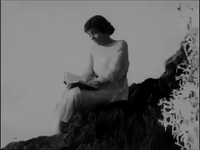

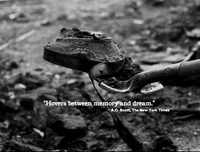



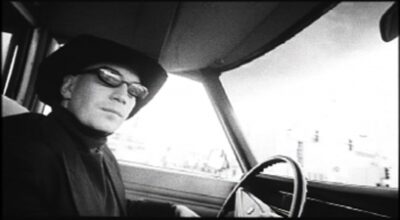


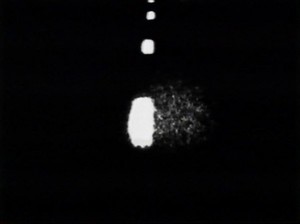
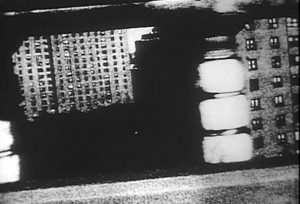
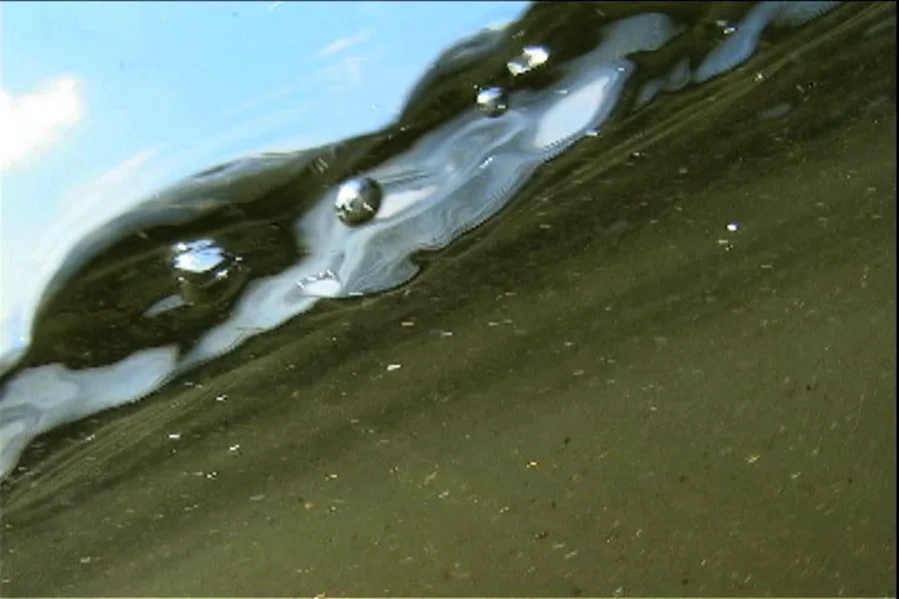


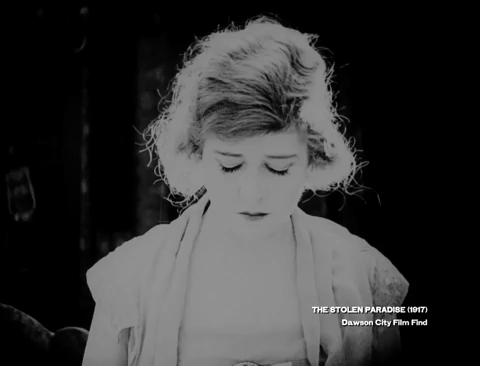
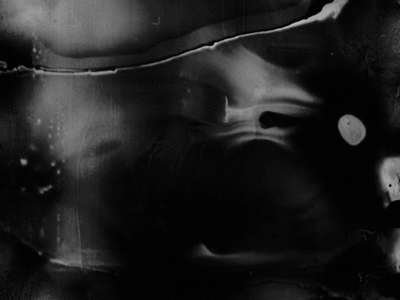
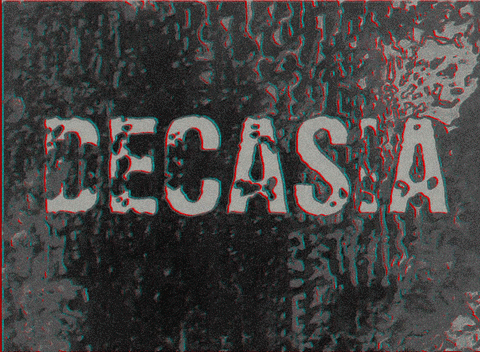
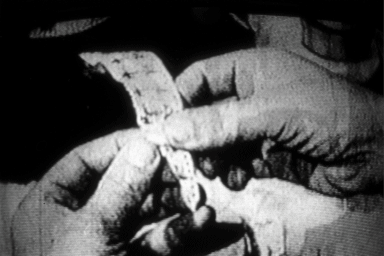
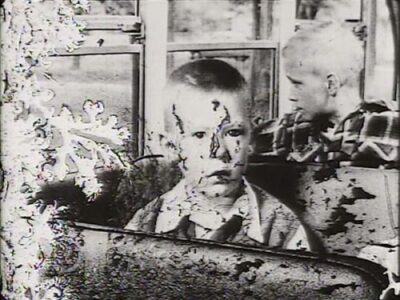
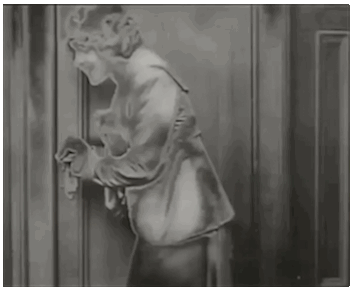
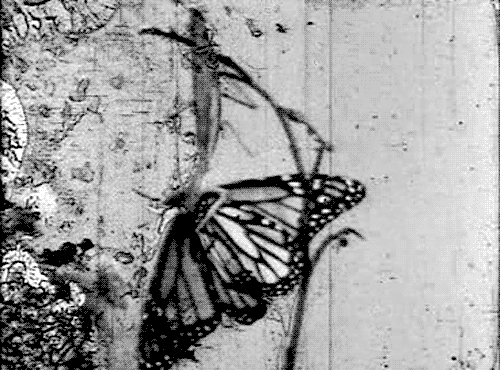
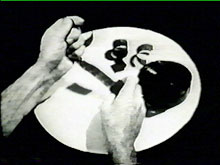
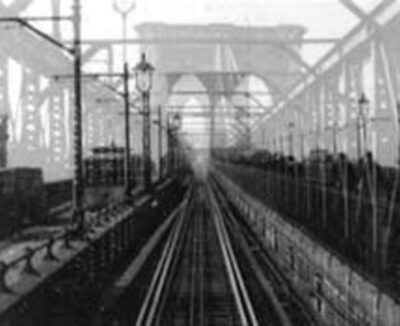



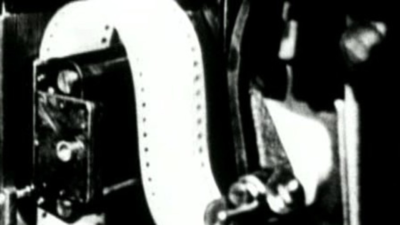



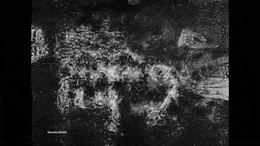
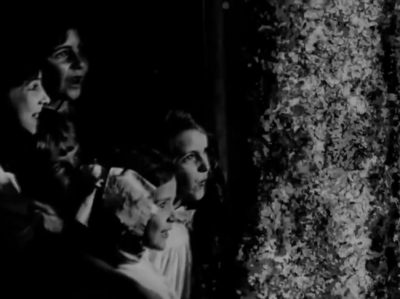
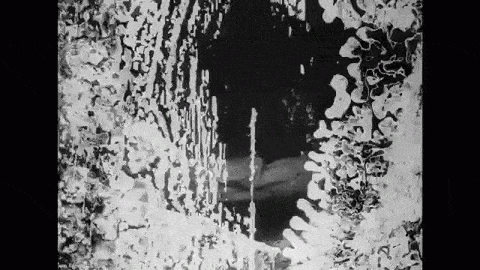
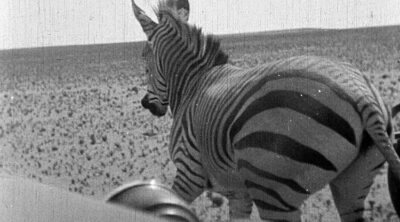
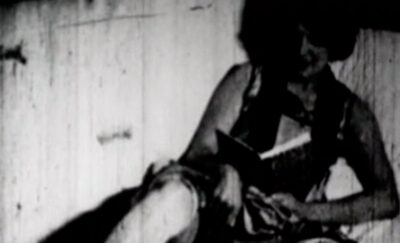

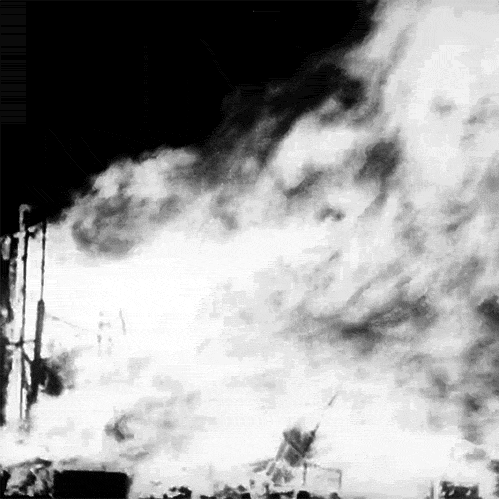
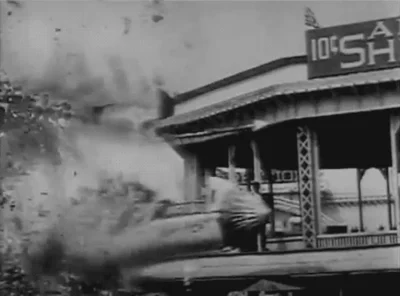
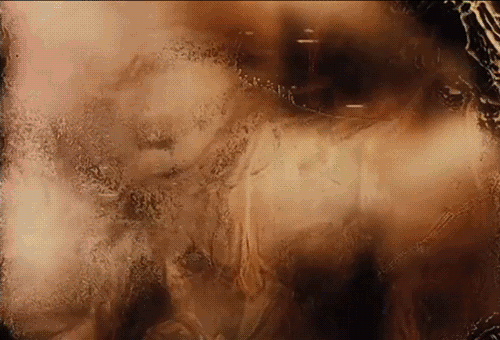
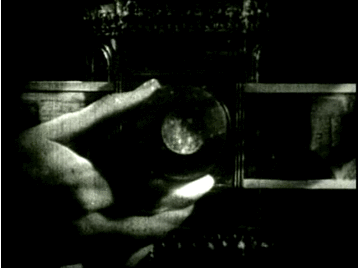
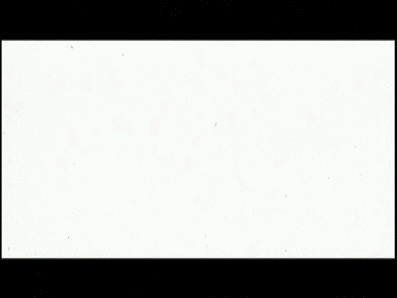

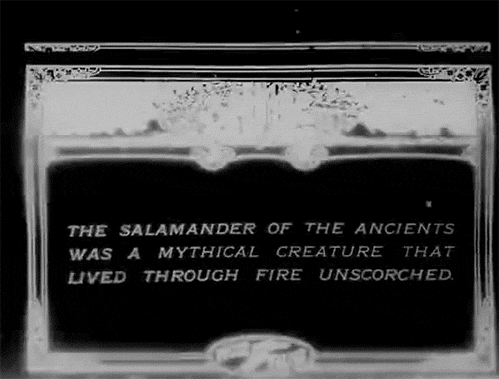

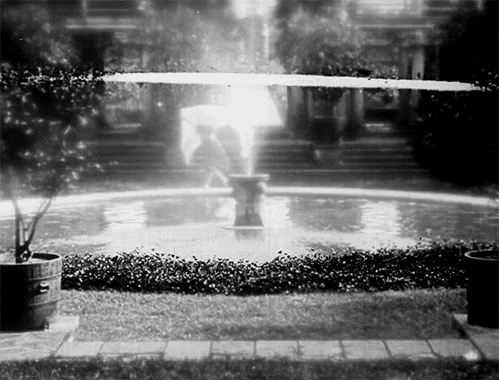








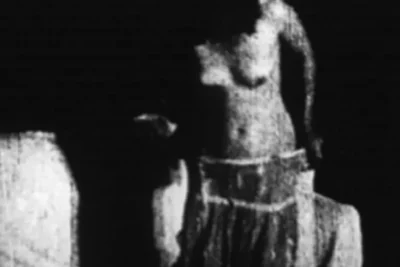

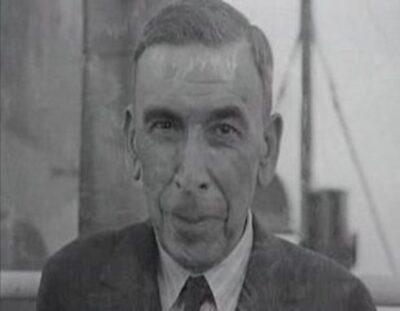
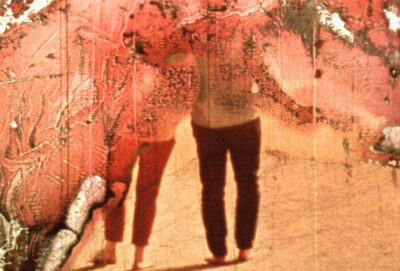
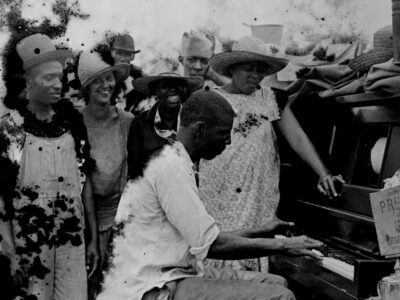
____
Further
BILL MORRISON • HYPNOTIC PICTURES
Bill Morrison @ IMDb
An interview with documentary filmmaker Bill Morrison.
DVD: Bill Morrison: Collected Works (1996–2013)
Bill Morrison @ Twitter
Matter and Memory: A Conversation with Bill Morrison
Orpheus of Nitrate: The Emergence of Bill Morrison
From decaying films and forgotten footage, Bill Morrison creates elegies to loss and memory
FILMMAKER BILL MORRISON: EXHUMING THE FORGOTTEN
Decay, Preserve, Observe: The Experimental Memories of Bill Morrison
A Poetic Archaeology of Cinema: The Films of Bill Morrison
A Deal with the Devil: Bill Morrison on Dawson City: Frozen Time
Book: ‘The Films of Bill Morrison: Aesthetics of the Archive’
Bill Morrison @ Instagram
NYFF Interview: Bill Morrison
Explosive Memories: Five Questions for Bill Morrison
“Le film comme tombeau : composition, décomposition et reprises dans l’œuvre de Bill Morrison”
Podcast: H2EEF 23 Memory & Matter with Bill Morrison
Bill Morrison Breathes New Life into a Decaying Silent Film
A Damaged History of Film: Bill Morrison Discusses “Dawson City: Frozen Time”
TCMFF Picks & Plans with Filmmaker Bill Morrison
THE GREAT FLOOD: INTERVIEW WITH BILL MORRISON
“FILM WAS BORN OF AN EXPLOSIVE.”
Film Reels Dredged from the Sea Become an Eerie Meditation on Mortality
Celluloid Phantoms: A Conversation with Bill Morrison
“Context is still important.”
____
Extras
Director Bill Morrison
Bill Morrison Interview: The Film Archaeologist
Bill Morrison speaks about his filmmaking
Bill Morrison | Electricity — Behind the scenes
_______
Interview
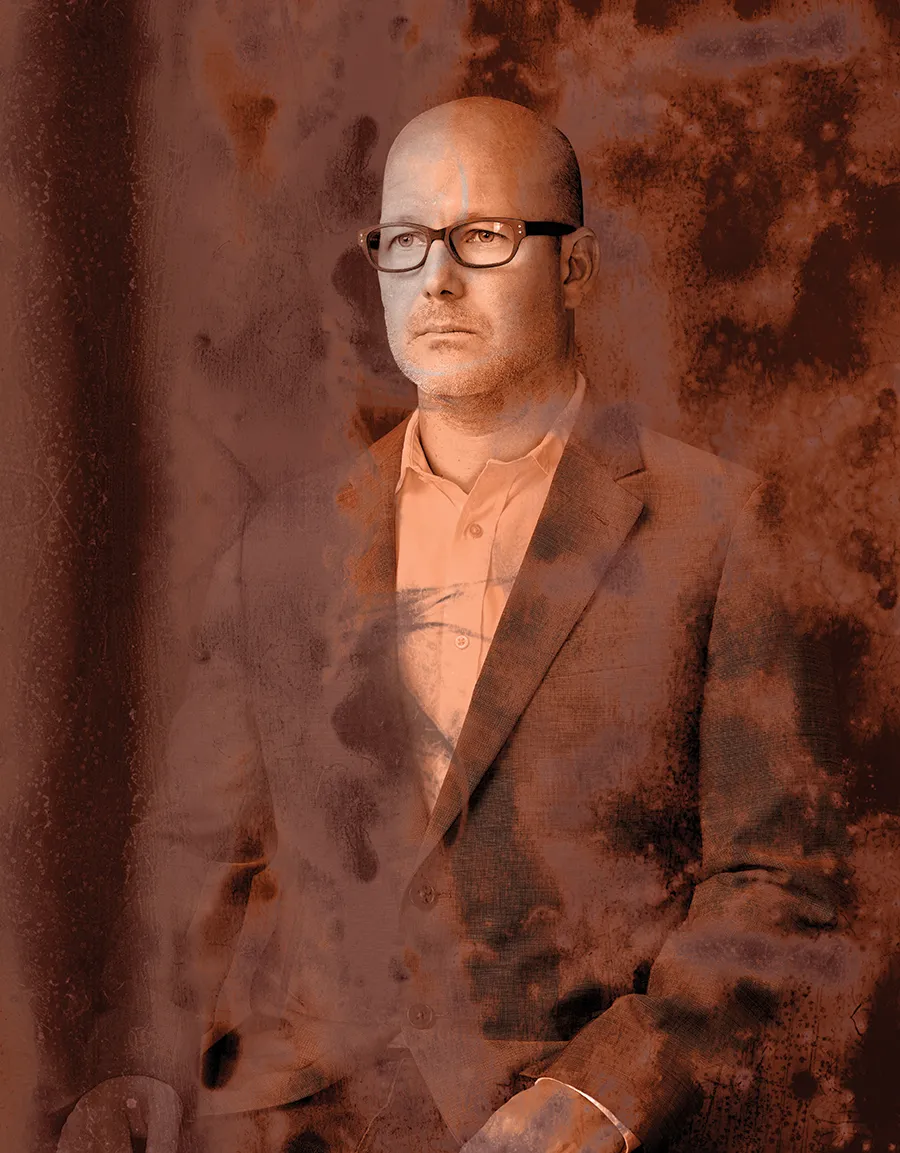
David Lipson: From what I have read about you, you went to art school….
Bill Morrison: I went to Reed College for a couple of years to make sure that I didn’t want to go the traditional liberal arts college route and then halfway through my second year I still wanted to go to art school. I wanted to go to New York and I wanted to start the rest of my life.
DL: So Reed College was like a safety valve.
BM: I don’t know if it was safety. My parents had a hard time understanding me wanting to go to an art school. They were worried.
DL: I see. So in this way [they figured] “he’ll get a diploma in something else.”
BM: Yeah this was their idea they wanted me to get a BA somewhere. I got two years into what would have been a philosophy major and realized that I was about as useful to society as a philosophy major as I was as an artist. So…
DL: (laughs). So then you went to Cooper…
BM: Yeah, then I went to Cooper Union.
DL: So what led to that choice? Why there?
BM: It was an all scholarship tuition-free school and so it avoided this whole conversation about asking to go because you didn’t need to pay anything. It became more a question of self-determination.
DL: It was all expenses paid.
BM: Once I got in, then I could say this is what I am doing.
DL: And your parents were ok with that?
BM: They were, and in fact it led to an improvement in my relationship with my father because he in particular was very wary of this idea of me becoming an artist.
DL: Now your mother is a teacher and your father is a …
BM: He is a lawyer—he was a lawyer, he passed away. At that time, I wrote him a letter describing my choices and also comparing some of his choices to mine. It was a marked improvement in our relationship ever after. We were very good friends after that.
DL: I want to stay on this area about art and influence. I’m surprised, now maybe I haven’t read all the interviews that people have done with you—but one of the artists that I think about when I look at your work is Francis Bacon. Did he have an influence on you is or was it just by chance?
BM: I love his paintings. You mean the decay and the opulence? That’s a great comparison. I hadn’t thought of that as being a direct influence, though I certainly see what you mean.
DL: Maybe unconsciously…?
BM: Maybe unconsciously. I mean I’m attracted to the same theories but I never thought about making a film in the style of Francis Bacon.
DL: Now another artist, maybe not as obvious, is Rauschenberg.
BM: Do you mean the collage? Yeah, I saw his retrospective at MOMA this past summer and I wasn’t aware of just how far reaching all the different media is. It’s quite remarkable.
DL: Now I mention Rauschenberg because De Antonio cites him as a huge influence in his work.
BM: Oh really, well they were contemporaries too.
DL: They were friends and he had this idea of making the film by taking the pieces and putting them together,
BM: You know Joseph Cornell was more of a direct influence. Of course, he was a filmmaker.
DL: Okay. All right. I have some other questions about that but I want to move on because I’m worried we won’t have enough time…
BM: Yeah, yeah, I would just also say Max Ernst.
DL: OK, good, surrealism,…
BM: And collage.
DL: Ok let’s talk about Dawson City. Why do you think nobody had made this film before you did? The remnants were discovered in 1979 …
BM: 78
DL: Yes, you’re right in 78. And you said last night “Thank God nobody had discovered it”. Is it because the technique hadn’t caught on? Were you just lucky?
BM: I have many theories about it, of course, and this isn’t anything I can answer definitively. The choice to make a film or not make a film — I think that when the collection was discovered there was a lot of excitement about the circumstances under which this was found and in some ways this had eclipsed what the contents of the actual discovery were. And it almost was enough for people to say that there were films found in a swimming pool and not discuss which films were found. I think that from a traditional archivist standpoint it was a frustrating find. Because there were little remnants, a reel here, a portion of a reel there, but there was no entire feature intact, there was no great discovery that was going to contribute to cinema history. And that’s what…
DL: And that’s what people were looking for.
BM: …that’s what people were looking for, whereas I’m looking at much more of a buffet table of images and disassociated scenes. So, in a certain way it was made to order for me. The other thing is that as a story it had gotten retold incorrectly many times, even positioning it in Alaska as opposed to Canada.
DL: You mentioned [during your speech last night] that it went off the rails.
BM: Yeah, I was even at the Library of Congress, which is one of the big collaborators with the restoration, and CNN happened to be there doing an interview and one of the archivists said “Oh yeah there was this bowling alley in Alaska.”
DL: [laughing] “[They might as well have said] It’s on the other side of Russia…”
BM: Yeah, and if that’s what they’re saying at the Library of Congress, then what are they saying elsewhere? It gave me this sense that human memory is not only fragile but it only has a shelf life of about eight to ten years and then people start forgetting things. So I think this story had been sort of put safely to bed. I’m not sure why there wasn’t more written about it. Certainly Sam Kula wrote two articles but they’re basically identical articles for different publications. And they don’t say that much. They talk about his experience of going there and finding them. Then they talk about the most well-known stars, the people whose names have really survived, who were in the collection. If you go to the library and archives in Canada there is a data base but that’s not publicly available. There’s also an internal memo that was chock full of errors. You know, just absolutely complete — even from page one to page seven there’s errors and inconsistencies. It’s a mystery to me why even just in a scholarly way it wasn’t written about. In some ways it’s curious that no one made a film just because there was a lot of film material there. But I say thank God because of course this became a thing. After Decasia it’s the film that I will be best remembered for.
DL: Well, as you know you never know what the future holds and you kind of look back afterwards and [then] you can say it. But at the moment you are kind of waiting to see what material–
BM: And I do know and I knew this all along that this was a singular story. And that I was going to tell it in a singular way. I have compared it to Titanic, because there are only a few stories that embody the 20th century in such a perfect way. From my standpoint, there’s some of the same mythical qualities that a true story like Titanic has.
DL: My reading of it when I saw it last night, was that you were trying to build a narrative around it and exploring all the different aspects that can be used trying to attach it to the present: the reference to Donald Trump, to other things that are going on today. So I think that’s to your credit as a filmmaker. You didn’t just [merely say to your audience] “OK here’s some archival footage.” Now, it wasn’t clear to me from your answer last night, did you say that you watched all three hundred and twenty-two films?
BM: [correcting] So, there are three hundred and seventy-two titles,
DL: Three hundred and seventy-two, yeah.
BM: I haven’t seen all of them.
DL: How many did you see?
BM: I’ve seen all the newsreels. In the silent films, I really just picked through until I could tell my story and find ways with the resources and the time I had. I saw quite a bit and I think I’ve seen more than just about anyone else. But at one point the important part was the newsreels. And they had a position within my film and then the rest was almost illustrative and poetic. And then there was quite a bit of supporting material that was almost equally as important.
DL: Ok, last question then: what is the future for you? Future prospects? You mentioned Netflix, have you thought about maybe going towards this media that young people would be more…
BM: more inclined to see. I think those doors are starting to open up to me more in the wake of this film. I think I was regarded as some sort of relic…
DL: [laughs] to be buried under a swimming pool
BM: Yeah. But, I think this film showed that there is interest in this kind of approach to history and these strange films. In the same way that vinyl became an interest for people. That’s something real, something physical. So, that’s an interesting conversation, in the last week I have talked to Nat GEO, I have talked to TCM. Who knows, I still have a lot of ideas. Dawson was an idea I had in my sock drawer for twenty years. There are others.
DL: What about fiction?
BM: Well, the thing about it is that I always say “Yes, I’d like to do something in fiction but then I never do.” People keep asking me “When are you going to make a real movie?” But, I never do it.
DL: [laughs] These are fake movies.
BM: Yeah, they are not real movies, right? There are certain types of scripts that I find very compelling. I found Robert Altman’s The Player very compelling because there was a telling of that story, the manifestation of the script that you’ve just read or you’ve just watched. So, that’s what drew me to Dawson. Here was this story of the film.
______________
21 of Bill Morrison’s 43 films
______________
Lost Avenues (1991)
‘Lost Avenues considers the fleeting nature of our memory: our attempts to capture and master our dreams, our histories, and our nature. Original and found footage was hand-developed, solarized and optically printed.’ — MUBI
the entirety
_____________
Photo Op (1992)
‘This is an excerpt from the 60-minute film commissioned for Conrad Cummings’s opera of the same title, which was produced by Ridge Theater and staged at La Mama, NYC, in June, 1992.’ — Letterboxd
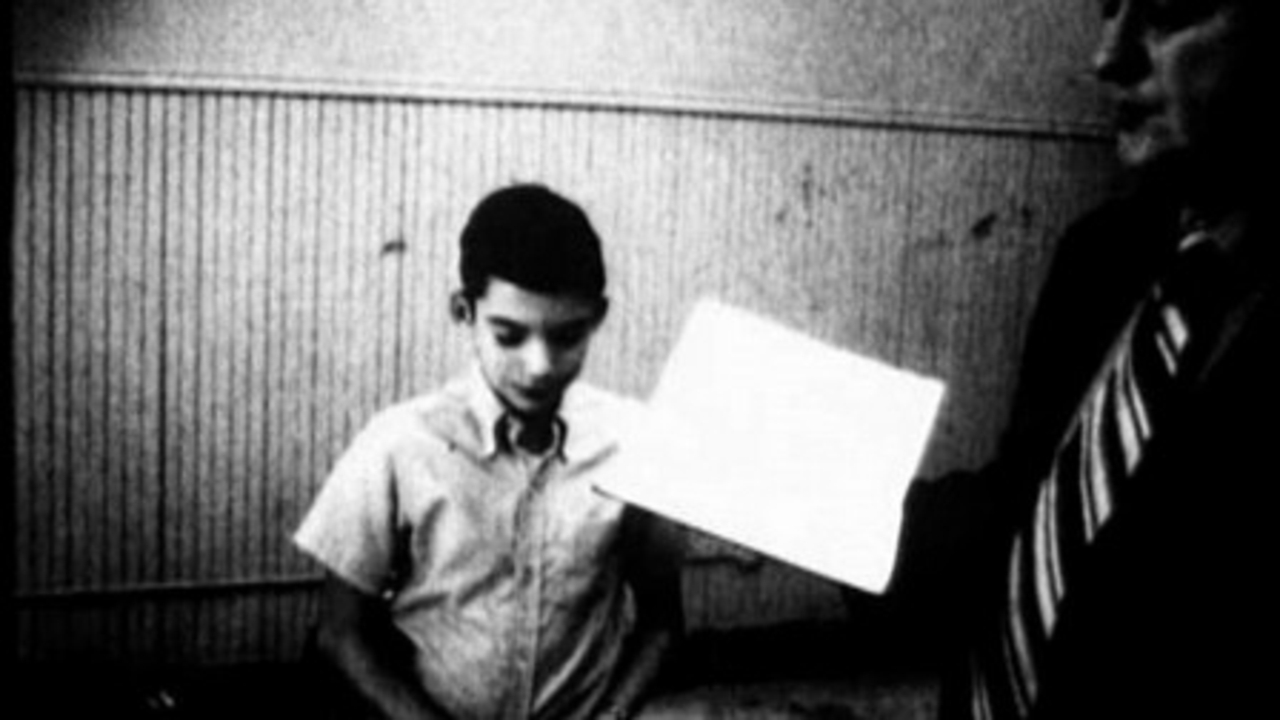
_____________
Footprints (1992)
‘One of his most virtuosic, Footprints is a six-minute riff on technology and evolution that combines the 20th Century Fox logo, Muybridge, Island of the Lost Souls, running animals and a Deren-inspired walk in the sand.’ –- Manohla Dargis
the entirety
_____________
Death Train (1993)
‘A history of cinema is played out during the film’s lifetime. Early train footage and zoetrope animation are combined with mid-century newsreel and educational films, finally concluding in a long, modern, aerial shot.’ — MUBI

__________
Nemo (1995)
‘The wind swirls up dust in a desert landscape. The picture is followed by images of clouds racing over the skyline of a city, of reflections on an expanse of water, of waves breaking over an embankment and of row upon row of burning candles. Then, gradually, music sets in: It initially accompanies the images, supports the patterns of movement in their characteristic style, pushes them ahead and enhances their drama. In Nemo, named after the captain in Jules Vernes «Twenty Thousand Leagues under the Sea», Morrison utilizes images of nature and natural phenomena to compose a cinematic poem about time and transience.’ — Claudia Slanar
Excerpt
______________
City Walk (1999)
‘An early Bill Morrison short, in this work he traverses an urban landscape utilizing high contrast black and white footage. The bustling nature of the setting is complimented by the energetic music by Michael Gordon.’ — Letterboxd
the entirety
_____________
Ghost Trip (2000)
‘The concept of the ‘trip’ can have two meanings: one describes a mental transformation of being (a hallucinatory state caused by drugs), while the other covers the idea of an indefinite itinerary, which is associated with the English word road. By its structure, Ghost Trip (2000) literally embarks on an unknown and sinuous quest. The movie is, per se, a strange object, the story follows the mysterious itinerary of a man who searches for myths in a landscape of undisclosed experiences. Starting with its formal structure, this essay explores the mythical stories that are implied in the images of Morrison’s film and tackles the question of how Ghost Trip portrays an existential void that embraces the search for the essence of things.’ — Benjamin Léon
the entirety
____________
Decasia (2002)
‘Often compared to Stan Brakhage, Bill Morrison created DECASIA entirely with decaying, old found footage, melded to the music of Bang on a Can’s Michael Gordon, performed by the 55 piece basel sinfonietta. The result is a delirium of deteriorated film stock, a moving avant-garde masterpiece that leaves its meaning open to interpretation and, most importantly, your imagination.’ — Icarus Films
‘Bill Morrison’s DECASIA is that rare thing: a movie with avant-garde and universal appeal…. Morrison is not the first artist to take decomposing film stock as his raw material, but he plunges into this dark nitrate of the soul with contagious abandon…The film is a fierce dance of destruction. Its flame-like, roiling black-and-white inspires trembling and gratitude.’ — J. Hoberman
‘Compelling and disturbing! Swimming symphonies of baroque beauty emerge from corrosive nitrate disintegration as rockets of annihilation demolish cathedrals of reality.’ — Kenneth Anger
Trailer
Excerpt
Excerpt
_____________
East River (2003)
‘The notion of a trip appears in East River, which makes for a different experience from any of the other Morrison films I’ve seen. The ‘trip’ is of a more conventional subjective nature, with the (video) camera (and sound) bringing the viewer into an unseen character’s physical experience of swimming. As the film begins –this time the film makes aesthetic use of color– we see water droplets on the camera lens. The camera tracks along with a pair of feet walking along the banks of the East River. The sound of footsteps are prominent as the camera tracks past a mesh fence, panning past the concrete embankment largely submerged under water, catching a brief glimpse of a person’s shadow on the concrete wall and a bridge in the background (recalling if only for these scattered elements, Peter Rose’s The Man Who Could Not See Far Enough (1982). We hear the sound of a loud splash –the character has jumped into the river- with the camera following. For the remaining few minutes of the film the camera tilts, pans, and moves (hand-held I would think) its position and level in relation to the water between complete submersion, water level, and above water. In this section of the film the camera explores gorgeous underwater color effect patterns affected by the refracted sunlight.’ — Donato Totaro
the entirety
_____________
Light Is Calling (2004)
‘In Light Is Calling, a deteriorating scene from James Young’s The Bells (1926) was optically reprinted and edited to Michael Gordon’s seven-minute composition. The aesthetic of Morrison’s film is inexorably intertwined with many of Michael Gordon’s pieces. We watch a decomposing film reel of a soldier who meets a mysterious woman in the woods. A meditation on the random and fleeting nature of life and love, as seen through the roiling emulsion of an ancient film. Morrison’s short was made through the process of reshooting decomposing black and white film, and the result is a dreamy, melting, light-drenched scene.’ — The Viennale
the entirety
______________
Outerborough (2005)
‘In 1899, a photographer at American Mutoscope and Biograph mounted his camera on the front of a trolley traveling over the Brooklyn Bridge. The three 90-foot rolls he created were edited together to complete the journey from Manhattan to Brooklyn, entitled Across the Brooklyn Bridge. As a commission by the Museum of Modern Art for the re-opening of their facility, American avant-garde filmmaker Bill Morrison took this remarkable footage and recombined it with itself to form a new split-screen extrapolation.’ — Bernardo74
the entirety
____________
Who By Water (2007)
‘Drawing from a passage from the Rosh Hashana Service, “Who shall live, who shall die… who by water, who by fire,” this short film deals with that which has been preordained—a future history that will in time unfold before us as the faces of passengers on a ship forces us to contemplate our own fate.’ — Letterboxd
the entirety
____________
Spark of Being (2010)
‘Spark of Being is an example of an artist resisting an aesthetic anchor. Bill Morrison‘s films are often categorized as non-narrative and experimental, so the idea of this artist tackling such a perennial chestnut such as “Frankenstein; or, the Modern Prometheus” leads us to wonder exactly how he is going to deconstruct such a familiar narrative. Throwing out all preconceived assumptions, Morrison pays homage to Mary Shelly and makes her Gothic creation fresh again with a startlingly literal interpretation. Indeed, Spark of Being may be one of the most faithful cinematic adaptations of the book to date.’ — Alfred Eaker
Trailer
___________
Tributes – Pulse (2011)
‘‘Tributes-Pulse’ is a collaboration between American filmmaker Bill Morrison and Danish composer and percussionist Simon Christensen. Christensen originally conceived of the project as a tribute to four American composers, Charles Ives (1874-1954), Conlon Nancarrow (1912-1997), Steve Reich (b. 1936), and Trent Reznor (b. 1965). Using exquisitely deteriorating nitrate-based archival film, Morrison weaves a story from the remnants of disparate narratives. The episodes appear intermittently between the undulating pulse of the film’s decay, the imagery compromised – yet made all the more poignant – by a dying celluloid medium, a rusted vessel carrying ghosts. Contrasting with the previous three sections, the final section is an original single-take contemporary aerial shot of the ‘Graveyard of Ships’ off of Staten Island, NY.’ — Letterboxd
Trailer
Excerpt
_____________
Re: Awakenings (2013)
‘During the early 1920s, a rare form of encephalitis lethargica swept the world, afflicting hundreds of thousands of people. Of those who survived, many were left in mysteriously frozen, nearly immobile states resembling catatonia, and presently remanded to long term institutions. By 1969, this odd illness–front page news in the 1920s–had been largely forgotten. But a young Dr. Oliver Sacks, coming to work at Beth Abraham, a ‘home for incurables’ in the Bronx, realized that among the hospital’s inmates were eighty survivors of that original epidemic, still frozen in time, decades later. Using the new drug L-dopa, Sacks was able to ‘awaken’ many of them, but following an initially near-idyllic period, the patients began experiencing ever more tormenting responses to the drug.’ — IMDb
Excerpt
______________
The Great Flood (2012)
‘The Mississippi River Flood of 1927 was the most destructive river flood in American history. In the spring of 1927, the river broke out of its earthen embankments in 145 places and inundated 27,000 square miles. Part of its legacy was the forced exodus of displaced sharecroppers, who left plantation life and migrated to Northern cities, adapting to an industrial society with its own set of challenges.
‘Musically, the Great Migration fueled the evolution of acoustic blues to electric blues bands that thrived in cities like Memphis, Detroit and Chicago becoming the wellspring for R&B and rock as well as developing jazz styles. THE GREAT FLOOD is a collaboration between filmmaker and multimedia artist Bill Morrison and guitarist and composer Bill Frisell inspired by the 1927 catastrophe.’ — Icarus Films
Trailer
____________
The Dockworker’s Dream (2016)
‘In The Dockworker’s Dream, American Bill Morrison invites us to (literally) navigate through the flow of archival images from the Portuguese Film Library. Edited, revisited and accompanied by a sound track by Kurt Wagner, leader of the Lambchop band, the images construct a journey that distantly echoes the spirit of the Discoveries: sailing up the River Douro, wandering through the streets of Porto, its factories, its dockyards, to reach the broad horizon of the African continent.’ — 3continents
the entirety
____________
Dawson City: Frozen Time (2016)
‘This meditation on cinema’s past from Decasia director Bill Morrison pieces together the bizarre true history of a long-lost collection of 533 nitrate film prints from the early 1900s. Discovered buried under the permafrost in a former Canadian Gold Rush town, their story conjures the forgotten ties between the fledgling film industry and Manifest Destiny in North America.
‘Located about 350 miles south of the Arctic Circle, Dawson City was settled in 1896—the same year large-scale cinema projectors were invented—and became the center of the Klondike Gold Rush that brought 100,000 prospectors to the area. Soon after, the city became the final stop for a distribution chain that sent prints and newsreels to the Yukon. The films were seldom, if ever, returned. By the late 1920s, over 500,000 feet of film had accumulated in the basement of the local library. Much of it was eventually moved to the town’s hockey rink, where it was stacked and covered with boards and a layer of earth. The now-famous Dawson City Collection was uncovered in 1978 when a new recreation center was being built and a bulldozer working its way through a parking lot dug up a horde of film cans.
‘Morrison draws on these permafrost-protected, rare silent films and newsreels, pairing them with archival footage, interviews, historical photographs, and an enigmatic score by Sigur Rós collaborator and composer Alex Somers. Dawson City: Frozen Time depicts the unique history of this Canadian Gold Rush town by chronicling the life cycle of a singular film collection through its exile, burial, rediscovery, and salvation.’ — kinolorber
Trailer
____________
The Unchanging Sea (2018)
‘The film The Unchanging Sea was inspired by the discovery of a decaying print of DW Griffith’s The Unchanging Sea (1910) in the nitrate vaults of the Library of Congress. Taking this ancient title as its point of departure, a new narrative was re-assembled from a variety of similarly ancient films about going off to, and returning from, the Sea. The characters in these old films appear to be emerging from the roiling oceans of Time, having floated like messages in bottles for over one hundred years, and now having washed up on our shores to tell us their stories.’ — Letterboxd
Excerpt
_______________
Cinematograph (2018)
‘The film seen here depicts the Lumière Brothers discussing and examining their Cinématographe some thirty years later. The sequence was filmed by the Paris-based cameraman Frédéric Fesneau in the Lumière’s laboratory in Lyon, France, on July 14, 1925. A portion of the film was used for a Fox News story on the Lumières, which would have been screened as part of a longer newsreel program shown before a silent feature in 1925-6.
‘Over the 93 years since it was first shot, this film has been stored in several facilities. Since the early 1980s, the film has been archived at the Moving Image Research Collections at the University of South Carolina, as MVTN A8398 8399: Lumiere Brothers.
‘During that time, the nitrate film stock originally used to record the Lumières has begun to deteriorate. All the degradation to the image seen here has been caused organically as a result of its natural decomposition. I did nothing to compromise the original image in any way. My contribution here was to edit the shots to create continuity and structure. I also slowed down (and sometimes reversed) the running speed by 50%, so that two frames appear for every original frame. I then copied the sequence onto itself, offsetting it by one frame, so that each frame is blended with a copy of itself or with an adjacent frame.’ — BM
the entirety
_______________
The Village Detective: A Song Cycle (2021)
‘During the summer of 2016, a fishing boat off the shores of Iceland made a most curious catch: four reels of 35mm film, seemingly of Soviet provenance. Unlike the film find explored in Bill Morrison’s Dawson City: Frozen Time, it turned out this discovery wasn’t a lost work of major importance, but an incomplete print of a popular comedy starring beloved Russian actor Mihail Žarov. Does that mean it has no value? Morrison thought not. To him, the heavily water-damaged print, and the way it surfaced, could be seen as a fitting reflection on the life of Žarov, who loved this role so much that he even co-directed a sequel to it. Morrison uses the story as a jumping off point for his latest meditation on cinema’s past, offering a journey into Soviet history and film accompanied by a gorgeous score by Pulitzer and Grammy-winning composer David Lang.’ — kinolorber
Trailer
*
p.s. Hey. ** David Ehrenstein, It should be built post-haste. ** Misanthrope, You are a super busy dude these days. Me too, but I think you take the cake. ** TomK, Hi, Tom! They’re both super worthy: those two books. I don’t know that Olga Ravn book. SciFi fiction is probably the area of my greatest weakness and ignorance. My ugh relationship to plot heaviness comes into play when I think about the genre, which is my problem. Anyway, I will look into it for my own good. Thanks for the tips, pal. ** _Black_Acrylic, Wow, I managed to please you with that post without you even being a theme park nerd. Pretty good! Phew, my (and wise people everywhere’s) next weekends are saved! ** Dominik, Hi!!!! So, so true. One time someone submitted some poems to Little Caesar, and they were terrible, and I rejected them. And the person, who lived in LA, wrote back asking if he could come over and try to convince me to publish his poems. I was in a curious mood or something, so I wrote back and said we can meet and talk if you want to, but I don’t think you can change my mind. So he came over, and he was really cute, and after hemming and hawing he offered to have sex with me if I would publish his poems. And that was one of the days when I learned that I have integrity, for better or worse, ha ha. Ha ha, good one: yesterday’s love. Love magically transforming every book on your bookshelves into delicious, edible pastries with 30 second long lifespans i.e, just enough time for you to choose one book, so which book do you gobble down?, G. ** Nick Toti Thanks, man. We theme park lovers gotta stick together. A horror feature! Whoa, awesome. Zac’s and my new film is kind of anti-horror feature, and, oh, what we would give for cheap property to rent. Most of our film takes place in one house that’s transforming into a home haunt, and it’s proving to be kind of murder to find a suitable house in SoCal that we can begin to afford. Sure, send me links, awesome! It’ll take me a bit to watch them ‘cos I’m overwhelmed with work right now, but I will first chance. Thanks, man! ** Tosh Berman, Yay that you liked the post! I don’t think I’ve ever made an actual map per say for a novel, but I make lots of graphs which are kind of the same thing maybe. Well, being an anarchist, it’s not so hard for me to accept that the election systems in place will never lead to any choices who aren’t huge compromises. Le Pen is very scary, but luckily people here, other than her weird racist, etc. cult, are well aware of that. That said, fingers very crossed. ** Bill, I guess so? I hope so! The Socialist party here is a completely dead duck. It’s possible they can repair themselves, but, even if they can, it’ll take years and years. We have sweet weather here too, and I too am beset with a shitload of work, and I hope the combo is as magical for me as for you. ** T, Hi, T! I just saw your email, and I’m about to write back, but, as you might know, that amazing (yes!) gig is now sold out, so woe is me. Disneyland has basically stayed the same size, with a little stretching, it’s just vastly filled in. You’ve never been to a Disney Park? Then we must go to Paris Disneyland! Seriously! No, I insist! Life’s okay, hugely busy, but I hope too be less snowed under in a few days. Thanks about the DP. Yeah, we’re psyched. How the hell did you get those big blisters? From stomping on effect pedals too enthusiastically? Well, then, I wish you a Tuesday that fits with you angel’s wings that miraculously don’t look embarrassing and silly somehow and that miraculously receive an awestruck response from everyone who sees you flying overhead. xo, D. ** l@rst, I’m so happy the post managed to ferret out some fellow map people. No, that’s so sad about the cancelled Six Flags trip. I’m about to burst to tears. No, really, I am. Poem! I’m so soon there! Everyone, D.l. l@rst, who’s better known in the wider world as Laurence Lillvik, has a poem just published on The Elevation Review, which you simply must read for your edifications! Here. Congrats, pal! ** Steve Erickson, Hi. Well, part of it is that Melenchon has been doggedly chasing this prominent position for many years, and part or most of it is rather inexplicable, i.e. he is kind of a Trump-like figure: arrogant, narcissistic, blustery, high strung, full of shit, and charismatic to a wedge of the French population for reasons that boggle the minds of those who aren’t smitten with him. ** Okay. Bill Morrison makes beautiful and strange films using heavily damaged and decayed footage from very old, non-preserved movies, and they’re kind of wondrous, if you ask me. I recommend checking them out. You might well be taken with them. See you tomorrow.




 Now available in North America
Now available in North America 
Bill Morrison is a new name to me and Footprints is really lovely stuff. The Village Detective also looks to be some essential viewing. Oh for the cinema at Thorpe Park to programme such fare.
Been watching part 1 of this Netflix feature Jimmy Savile: A British Horror Story and it makes for a grim, authoritative watch. He’s wound up being Leeds’s most famous son, which is a curious claim to fame alright. I cannot see how the film could be made by anyone in British TV (espesh the BBC) who wasn’t already implicated somehow.
Dennis, Yeah, I’m a be super busy at work today. Bunch of requests came in yesterday for today. Erf. But they’ll make the day go faster.
Stills from movies are interesting, no? Like a different look at a film, a newish perspective. Funny how I’ll see a movie mentioned and then see a still(s) and be like, I need to look into this further! where I otherwise wouldn’t just reading about it.
Hope your day goes well. I’ll make the best of mine.
The only Morrison work I’ve seen was the one apparently inspired by Mary Shelley’s Frankenstein, “Spark of Being”? and something very short which I dug, need to see more.
My favorite kind of visual art is mostly collage/appropriation stuff so it’s cool when I get to see it in film outside of animation.
Truly beautiful iages.
And here’s a beautifulsong to go along with them.
Correction
I saw Dawson City: Frozen Time in a theater, and on a big screen, and that was a wonderful “wow.” Very moving work.
Hi Dennis. Yeah, I can’t imagine trying to find a house to shoot a feature in in SoCal without the help of a sizeable budget. Most of the stuff I shot in L.A. was either documentary or so abstract that setting didn’t matter, but I did shoot one short film that required finding a house. Even though we were only there for one day, the whole ordeal of finding the place and shooting there was enough stress to make me physically ill. Much of that was due to the fact that I was almost entirely on my own, so hopefully you have a helpful producer or two to help deal with the logistics. Shooting in the Midwest has sort of opposite problems: there are fewer hoops to jump through because there’s not really a film industry to speak of, but finding collaborators with any experience is much harder. Inexperience can be good for some things (I’ve always liked working with non-actors), but it sucks when you need, say, someone to do color correction or a good sound mix.
Keep an eye on your inbox for links to the Sigmund Snopek movie-in-progress. I’ll send it today. Talk soon!
For Gay City News, I reviewed FEAST, currently streaming on MUBI: https://gaycitynews.com/feast-revisits-a-dark-chemsex-crime-story/. In a climate less concerned with “good representation” of LGBTQ people and more open to formal experimentation, I’m sure this film would’ve gotten a lot more exposure.
What candidate do the yellow vest protesters prefer? Or do they feel so alienated from electoral politics that they don’t like any of them? Seen from the U.S., those protests look like an odd mix of left and right populists bonding.
Hi!!
Okay, this is hands down the best submission story we’ve shared so far. Nobody’s ever offered to sleep with me to get published in SCAB, haha. What a twist that the person actually looked cute – pretty people who write terrible poems have an undeniable charm.
Uh oh, this is a brilliant but difficult love because if I eat the pastry, it means I destroy the book – so then I’m tempted to pick one I won’t feel sorry for, maybe Marilyn Manson’s “The Long Hard Road Out of Hell”. BUT I’m also guessing that the more I like the book, the tastier the pastry (what a rhyme!), in which case I might go with “Forever Butt” – that ought to be delicious. (As I was browsing my shelves, I realized that most of my books would probably taste foul, haha.) Thank you for the opportunity! Exterminator love catching every cockroach and mouse manually to set them free in mother nature because he doesn’t have the heart to kill them, Od.
Hey Dennis. I’ll spend more time with these over the next few days. I watched ‘Dockworkers Dream’ in full, which might have been a mistake because visually it was cool but damn I did not like the soundtrack at all. Watched it on mute and enjoyed it more, haha. Shucks about the concert. I must have got one of the last available tickets then. Huh. Oh well, they’ll be plenty more where it came from. I have in fact been to Disneyland Paris! I meant Disneyland Florida, or I dunno if it’s Disney World rather than Land? I went when I was 5 and in the depths of my Disney addiction, which makes, what, 18 years of deprivation, so if you wanna go I’m more than down. I actually have someone I know who I believe is playing the singing warthog out of the Lion King there at the moment, so the excuses to go again just keep piling up. I wish my foot blisters were from stamping on effect pedals!! Not to go on about very banal body trouble, but I’ve had painful legs for a while now because of the way I walk (my friend’s diagnosis: “cause you walk like a faggot” 🙁 So I bought some insoles off the web and even though the legs are better they gave me these blisters instead, and I think I’d rather have the leg pain. Or angel wings, actually. Even the pink fluffy elasticated type. Wishing you a Wednesday that’s like Disneyland Paris deciding that they’re going to mount a special remixed screamo version of the Lion King, and has karaoke style lyrical assistance for the crowds – no, hordes – who want to come and join in xT
Some of these stills look wild. Will definitely spend more time with the clips, after my work time block (eek).
I’m with you on plot-heavy science fiction, Dennis. But I just started this very odd novel:
https://www.goodreads.com/book/show/58311285-my-volcano
Pretty interesting so far.
Bill
D-
Thanks for sharing my poem! I truly appreciate that.
I’m sure I cried a little at being denied Six Flags Great Adventure. There was a positive about seeing cats (aside from the lithe actresses in catsuits), the local public school 8th grade where my gf went attended as well, (I went to Catholic School.) We got to sneak away and make out a little bit on the filthy streets on 1987 Broadway.
I’m totally unawares of Bill Morrison, or should I say “was…”
-L